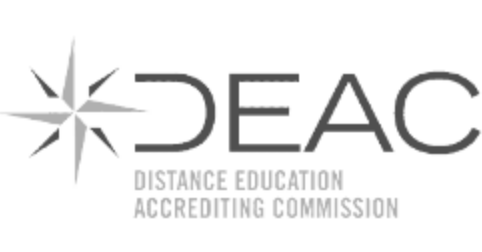Many people are surprised to learn that nearly nine out of 10 Americans adults have a high school degree. Around 30% have a bachelor’s degree. Put that way, the problem of adults without a basic high school diploma seems to be no problem at all.
Unless you’re one of those adults without one.
While the big picture number is decidedly encouraging — 90% of the population having a diploma is unarguably impressive — but that big picture is made up of a myriad of little pictures. In some parts of the country and in some demographic groups that 9 out of 10 could be flipped on its head, with the 90% majority of adults living without a diploma or GED.
“Only ten percent of adults don’t have a diploma. Sounds pretty good…but that’s something like 30 million people!” says Marc Allberg, who spent the first 43 years of his life working for his family’s well-drilling business in a part of the Georgia mountains once known for black bear and white lightning. “My granddaddy was a part-time moonshiner and full-time well-digger. He didn’t finish high school. Didn’t need to. Didn’t really matter back in the day.”
But those days are gone. Allberg’s father also left high school without finishing. Focusing on the well-digging part of the family business, he built it into a thriving business that employed a handful of workers, many of them family and friends, including Marc. “I didn’t finish school either,” he explains. “I had a guaranteed good job, and I knew the boss wasn’t going require a diploma!” He chuckles now, but there was little to laugh about when the real estate bubble burst and took with it small family businesses all over the country. Allberg and millions of people like him found themselves suddenly, unexpectedly in a meager job market competing for the rare opening in a construction industry that was down for the count.
Allberg decided he’d need to learn a new trade. A stop at the nearest career college or trade school inspired him to try his hand at the HVAC industry. Excited at the prospect of diving into a new career, Allberg hit another unexpected wall: “You can’t go to trade school if you don’t have a high school diploma,” he says.
Dropping out…it’s not what you think
Young men and women leave school for any number of reasons. Some drop out of high school so they can work to support a family in financial crisis, others because of an unplanned pregnancy. There’s an illness, family problems, and sometimes just plain old rebellion. Whatever the reason, A large number of those 31 million find their youthful decision to quit high school, whether by necessity or choice, doesn’t square with their life goals as adults. Many are apprehensive about going back to school.
Beyond the professional and career implications, the social stigma of not having a high school diploma can be awkward at best–and often painful. It doesn’t help that the term “drop out” carries with it potent negative connotations and images of a rebellious teen who chooses to run wild instead of knuckling down until graduation day. Even if conventional wisdom says that someone who didn’t finish high school isn’t inherently stupid, there is, whispered and in private, a very real belief that a high school dropout is lazy or irresponsible. Obviously, this is kind of sweeping generalization is as inaccurate as any other. Again, circumstances dictate someone leaving school more often than preference.
The real reasons are surprising. According to the National Center for Education Statistics, nearly 30% drop out because they are failing too many classes. Rather than repeat a grade or be saddled with summer school, they find it easier to drop out. This statistic alone underscores the desperate need for dropout prevention programs. Almost as many–nearly 26 percent—identify boredom as a major contributing factor. The same amount leave school to assume the role of a caregiver. A further one in five say that school just didn’t fit their lives and plans.
The educational glass ceiling
The biggest downside to dropping out is the limitation on upward career mobility. The United States is a vast nation with an incredibly diverse population that takes advantage of opportunities not found in other countries. But there is an undeniable barrier in the workplace–and society as a whole–for people who do not have a high school diploma. The lack of a diploma can be an enormous barrier to getting any job, and almost certainly will keep even the most hard-working and talented person from getting on with a larger company or government agency. That limits no-diploma workers to small companies, typically at a lower wage. A high school degree is almost universally considered the bare minimum and those without one find themselves ineligible for jobs and even job training programs.
Can you be too old to get a diploma?
The short answer is no. Surprisingly, year-over-year, roughly 25% of equivalency test-takers are actually still of high school age. Nearly thirty percent of equivalency test-takers are over age 30. Better late than never, particularly given the financial rewards that come from better education.
What are the options for getting a diploma later in life?
On the plus side, the American and Canadian education systems allow for adults to get to catch up. Adult learners can enter programs that offer an “equivalency” degree. It’s not the same thing as a true diploma. Equivalency programs are systems of tests that measure proficiency in traditional high school subject areas. They are not equivalent to the total high school experience, and they do not require extensive, nuanced explorations of core courses and electives, or the breadth of exposure to subject matter that comes with four years of study. At the most basic level, equivalency programs simply measure if a test-taker can score better than 60% of high school students.
But the benefits are tangible. On the plus side, a worker with an equivalency degree makes about $960 more per month than someone with no equivalency degree. However, someone with a true high school diploma makes roughly $1600 more per month than someone with a GED.
GED – the grandad of equivalency programs
The best-known high school diploma equivalency option is the GED. It’s also the most misunderstood and confusing! At various times in different parts of the country, GED stood for Graduate Equivalency Diploma or Graduate Equivalency Degree. It’s also been called the General Equivalency Degree. In truth, the GED is a brand name owned by a company that is itself another abbreviation, ACE. In 1942, the American Council on Education was commissioned by the US Armed Forces Institute to design a testing system to measure high school academic skill levels. That was the start of the GED. The test has been revised several times over the years until its latest incarnation as the “new GED.”
Alternatives to the GED
Until 2014, GED was the only game in town for equivalency tests. Now there are two other standard tests, TASC (Test Assessing Secondary Completion) and HiSET (High School Equivalency Test), that are technically different products but are generally (colloquially) lumped under the generic term “GED,” and refer to high school equivalency exams.
There are similarities and differences between these tests. Some are more popular in some states or are even mandated or disallowed by state statutes.
Changing attitudes
It is not uncommon for adults who earn a GED to keep it quiet. Kenisha Virgil is a police detective in Florida who earned a GED when she was 20 years old. A confident, outgoing woman who dropped out of high school at age 16 for a combination of religious and family reasons, she was once ashamed of her GED. “I was so embarrassed by it that I made up stories about my high school experiences, my classmates, my graduation. For most of my adult life, I told the same complex lies to everyone—coworkers, friends, even my boyfriend.” By sheer coincidence, she accompanied a man she had been dating for nearly three years, and who had no idea of her true history, to an impromptu meeting at the very high school she pretended to have attended. “We parked and he said something like, ‘I will let you lead the way to the office since you went here.’ I burst into tears. Poor guy…he had no idea what was going on!” She fessed up and was shocked to learn her embarrassment was unwarranted. “He was genuinely proud of me for getting a diploma on my own.” Today, Virgil openly discusses her GED and counsels kids at that same high school—the one she didn’t really attend—on the value of a diploma of some sort.
While they used to be looked down on by “polite society,” meaning among people who finished high school, GEDs have come to represent an accomplishment, a victory by someone who may have quit once but refused to be beaten. A GED is a badge of honor, not a sign of failure.
It’s not a diploma…why does that matter?
It should be stated clearly that a GED, HiSET, and TASC and the handful of other brands of similar programs are not truly diplomas. Why does that matter? Studies have shown that GED holders are less likely to enroll in college, and those that do are substantially less likely to succeed. That’s because the GED, while qualifying someone academically to attend college, does not prepare them for the rigors of collegiate study. In fact, 77% of GED holders don’t make it past the first semester in college. Even in the military, GED holders are twice as likely to drop out compared to diploma holders (45% vs 24%).
Why is this the case? As stated earlier, the GED and similar programs measure whether a test-taker has a certain body of knowledge. They do not measure that person’s ability to succeed in a learning environment, classroom, or program. The possession of knowledge is not the same as being a good student. And that is important in some settings.
Can an adult get a real high school diploma?
Adult opportunities do not end with the GED and similar programs. In some parts of the country, it’s possible to get a diploma in a high school-like setting catering to adults. But that’s rare. There are a handful of online high schools that allow adults to get an actual high school diploma instead of an equivalency degree. The difference is not subtle. GED-holding adults who apply for college often have trouble being accepted to higher education programs because, while GED-type programs meet national standards for knowledge and test-taking ability, they do not necessarily mean the holder will be a good student. In fact, with a close to 80% drop-out rate by the second semester, many colleges are unwilling to accept GED holders. This is particularly true for more competitive colleges and universities.

CHS offers two tracks for its high school diploma programs for adults. One is geared to students planning to pursue a career or trade, and the other is focused on preparing a student for college. An adult student can earn credit for prior learning and life experience, thereby shortening the time it takes to go from acceptance to graduation. In either case, the student comes away with a fully accredited, accepted diploma that represents not just a body of knowledge and the ability to pass a series of tests but also a track record as a dedicated, functional student. Best of all, since it’s all online, students can do their courses at their own pace and when it is convenient for their busy adult lives.
“It’s an apples-to-apples comparison,” says Dr. James Etter, President of Citizen High School. “An adult student who graduates from CHS is every bit as qualified as a student who graduated from any high school in the country. Colleges and employers know that. Our graduates have gone on to some of the best schools in the country and have embarked on successful careers in every field imaginable.” Etter makes the case that CHS adult graduates are even better bets for colleges and universities than a traditional-age student.
“These are people who decided to go back to school and get the full experience, learn the same kind of broad topics, and are held to the same standards as other students,” he explains, “but they also come with a formidable amount of life experience and first-hand knowledge of how the world works. They know what they want, know how to get it, and are determined to succeed.”
If you are interested in going back to school and getting a degree, we’d like to hear from you!
Sources

Richard Williamson
Chief Marketing Strategist














